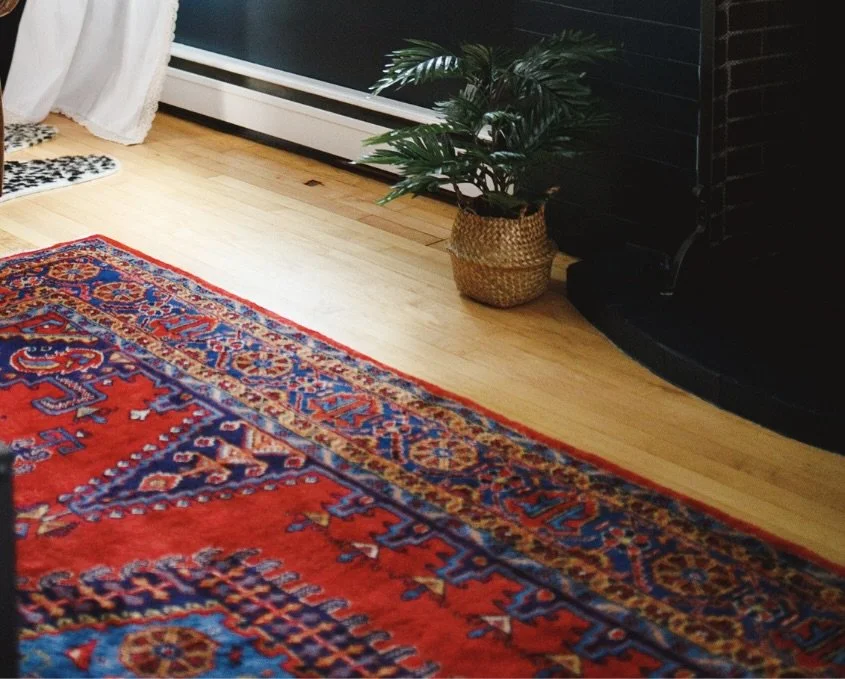Wait, How Was that Rug Made?
Buying a rug should be a thoughtful decision. I often recommend clients allow ample room in their budget for both quality art and rugs. But how do you choose a rug? I wrote a blog about different rug materials, but what about how it’s constructed? Does that really matter?
The answer is yes! How a rug is constructed has a massive impact on the durability, appearance, feel, and price tag, to name a few. Wanna know more? Read on.
Hand knotted: most intricate weaving process, longest durability (up to 100+ years!), largest price tag, weaving and knots can be slightly uneven, prestigious
Hand tufted: can last 5-10 years, less time to produce, so more affordable; known for shedding, smooth cut-pile surface, thick pile height
Hand hooked: lasts 3-10 years, the surface pile loops are uncut (mimicking embroidery), less time to produce, so more affordable
Hand woven shag: shelf life of 2-8 years, deep pile, some shedding, affordable
Power loomed/machine made: can last 2-6 years, made from synthetic fibers, no shedding, most affordable
Flat Weave: can last 3-10 years, woven on a loom, usually reversible rugs, often referred to as dhurries or kilims, thin pile
Natural fiber: lasts 2-6 years, inexpensive, biodegradable, eco-friendly, can fade in direct sunlight; cotton, jute, bamboo, seagrass, linen, and sisal are all examples
Hair-on-hide: felted background, can last 5-10 years, no shedding
Indoor/outdoor: can last 1-5 years, mold resistant, made with UV inhibitors, ideal for patios and outdoor dining areas
Does this help you identify rugs you already have, or narrow down the type of rug you want to buy?


